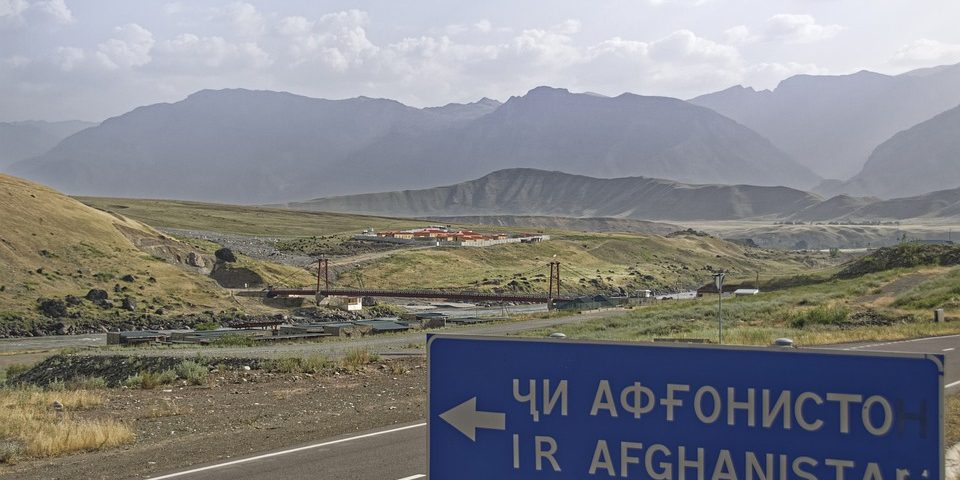Although the fading governmental control and the revival of the Taliban militancy had gradually marked the state of affairs in Afghanistan for the last few years, the recent surge of the Taliban expansion was inevitably linked with President Joe Biden’s decision to end the US military presence in Afghanistan uttered during his White House briefing in April 2021. Justifying the withdrawal of the US troops, as well as the forces of the NATO allies and operational partners, who would be out of Afghanistan by the 20th anniversary of the September 11 attacks, he, nevertheless, referred to the “duly negotiated” diplomatic agreement between the US government and the Taliban to withdraw troops by May 1, 2021, the commitment he “inherited” from the previous administration [The White House, 2021a]. Indeed, it was the agreement between the Trump administration and the Taliban signed in February 2020 that set up May 1, 2021, as the deadline for the withdrawal of the US troops in return for the Taliban pledge to reduce violence, cut ties with terrorist groups and commence negotiations with the Afghan government [Zucchino, 2021]. Moreover, according to the defense officials, President Donald Trump even planned to withdraw the troops before the January inauguration of Biden [BBC, 2020]. The current withdrawal of US troops from Afghanistan, however, became the culmination of President Obama’s plan to reduce the US combat forces that at its height in 2011 amounted to 110,000 troops, which should have been entirely out of the country by 2016 [Landler, 2014].
In his July briefing, President Biden was even more precise, stating that the US military mission in Afghanistan will conclude on August 31, highlighting that the military commanders advised a speedy move, adding that the goals of the military mission, primarily preventing Afghanistan from becoming a base for further attacks against the United States, had been achieved [The White House, 2021b]. The withdrawal of troops this time indeed seemed to be carried out in a speedy way, as it was revealed at the Pentagon Press Secretary John F. Kirby’s briefing that 90 percent of it was already complete by early July [US Dept of Defense, 2021].
Despite the overall rhetoric, the actual number of US troops subjected to withdrawal by the end of August was 3,500, as well as 7,000 NATO and allied troops [Gibbons-Neff et al., 2021], which is a mere fraction of the number of foreign troops deployed in Afghanistan a decade ago, nevertheless, the timing and the pace of the withdrawal became a matter of severe criticism by a various perspectives, although the eventual withdrawal of the troops to end this “forever war” would seem by most sides the right thing to do. Hamid Karzai, the former president of Afghanistan, stated that the overall mission failed, as extremism in the country is at its “highest point” and the departure of troops leaves behind a disaster, adding, nevertheless, that Afghanistan would be better off without foreign military presence [Gannon, 2021]. While Russian Foreign Minister Sergey Lavrov would depict the US and NATO military departure from Afghanistan as “hasty” [Kommersant, 2021], the Chinese analysts would go even further by dubbing it “irresponsible and hasty” [Yusha & Lanlan, 2021]. A great share of criticism towards the ongoing withdrawal of troops during the Trump and Biden administrations came from American experts, as the unconditional departure without noteworthy concessions from the Taliban side would only facilitate their military revival and jeopardize the peace process [Worden, 2020].
As for the Central Asian region, the current instability in Afghanistan linked with the departure of the US and NATO troops, failure of the government to maintain security and the ongoing military expansion by the Taliban, pose a clear threat with potential long-lasting implications. With the end of the US military presence, which for decades restrained radical forces and maintained authority in Afghanistan, civil war, the fall of the constitutional government, drug-trafficking, thriving of transborder extremist groups and massive refugee flows would turn into the major security concerns for Central Asia and beyond [Trenin, 2021]. Interestingly, the 2012 reports on the potential implications of the US military withdrawal would present an almost identical list of security problems for the Central Asian states that could be caused by greater instability in Afghanistan following the departure of foreign troops, namely the spread of radicalism, drug-trafficking and refugee flows, especially considering the ethnic composition of Northern Afghanistan [Castillejo, 2012].
Although intelligence assessments urged about the plausible collapse of the Afghan government within six months upon the US withdrawal [Lubold & Trofimov, 2021], it seems that the speed and the scale of the Taliban advance and that of the collapse of the Afghan security forces were not foreseen by anybody [Graham-Harrison, 2021], which forced the three Central Asian states bordering Afghanistan – Turkmenistan, Uzbekistan and Tajikistan – to seek for urgent security reinforcement through diplomatic and strategic initiatives. Despite the fact that the Taliban persistently assured the inviolability of the borders of the Central Asian states, as they did during their July meeting in Moscow with Russian Foreign Ministry [mid.ru, 2021], the full-fledged border reinforcement, deployment of reservists, military drills and construction of refugee camps were undertaken. Tajikistan mobilized 20,000 reservists for the reinforcement of the border with Afghanistan [Bobokhodzhiyev, 2021], and so did Turkmenistan, despite previously holding a meeting with the Taliban delegation in Ashgabat [Radio Azatlyk, 2021]. Even Kazakhstan, which does not share borders with Afghanistan, puts their military forces on operational readiness and monitors the situations in Afghanistan 24/7, the Deputy Minister of Defence reported [Vaal’, 2021].
Being the power with long lasting military presence in the region, as well as the participant of several regional interstate security organizations, Russia actively engaged in the matter from the onset of the Afghan crisis through the Collective Security Treaty Organization (CSTO) and Shanghai Cooperation Organisation (SCO), immediately scheduling joint military drills with Tajikistan and Uzbekistan. Besides, Russia has a large military base in Tajikistan and had long been involved with the maintenance, equipment and training of the Tajik border security troops, and pledged to provide Tajikistan with military equipment and technical assistance [Tass, 2021].
In the meantime, as the Taliban claims to control 85 percent of Afghanistan, including the key districts and checkpoints across the Central Asian borders [France24, 2021], the Central Asian states are already preparing the infrastructure for the potential refugee flow, which in Gorno-Badakhshan Autonomous Region of Tajikistan alone is feared to reach 30,000 [Abdukakhhor, 2021], while in Termez, the Uzbek city near the Afghan border, the authorities already erected the tent camps for refugees [Eurasianet, 2021]. On the other hand, Kyrgyzstan, another Central Asian state that does not share a border with Afghanistan, requested Tajik authorities to facilitate the transfer of ethnic Kyrgyz refugees from Afghanistan to Kyrgyzstan through Tajikistan [Radio Azattyk, 2021].
References:
- Abdukakhhor, A. (2021). Tajikistan and Other Countries Expect Thousands of Refugees. Retrieved from https://rus.ozodi.org/a/v-afganistane-obostrenie-konflikta-tadzhikistan-i-sosednie-strany-gotovyatsya-prinimat-bezhentsev/31319888.html. Accessed on 23.07.2021.
- BBC (2020). Trump ‘To Order Further Troop Withdrawal’ from Afghanistan and Iraq. BBC. Retrieved from https://www.bbc.com/news/world-us-canada-54968200. Accessed on 22.07.2021.
- Bobokhodzhiyev, M. (2021). Emomali Rahmon Ordered the Mobilization of 20,000 Reservists to Reinforce Tajik-Afghan Border. Retrieved from https://asiaplustj.info/ru/news/tajikistan/security/20210705/emomali-rahmon-poruchil-mobilizovat-20-tis-voennosluzhatshih-rezerva-dlya-ukrepleniya-tadzhiksko-afganskoi-granitsi. Accessed on 23.07.2021.
- Castillejo, C. (2012). Regional Implications of NATO Withdrawal From Afghanistan: What Role For the EU? Agora Asia-Europe, No. 4.
- Eurasianet (2021). Uzbekistan Bracing for Possible Afghan Refugee Crisis. Eurasianet. Retrieved from https://eurasianet.org/uzbekistan-bracing-for-possible-afghan-refugee-crisis. Accessed on 22.07.2021.
- France24 (2021). Taliban Says it Controls ‘85 Percent’ of Afghanistan’s Territory. France24. Retrieved from https://www.france24.com/en/asia-pacific/20210709-taliban-says-it-controls-85-percent-of-afghan-territory-made-no-ceasefire-promise-to-us. Accessed on 23.07.2021.
- Gannon, K. (2021). AP Interview: Former President Says US Failed in Afghanistan. Retrieved from https://apnews.com/article/joe-biden-afghanistan-ef29617f97733dee2b567cedfde2f064. Accessed on 22.07.2021.
- Gibbons-Neff et al. (2021). U.S. Has 1,000 More Troops in Afghanistan Than it Disclosed. The New York Times. Retrieved from https://www.nytimes.com/2021/03/14/world/asia/us-troops-afghanistan.html. Accessed on 22.07.2021.
- Graham-Harrison, E. (2021). Afghanistan Stunned by Scale and Speed of Security Forces’ Collapse. Retrieved from https://www.theguardian.com/world/2021/jul/13/afghanistan-stunned-by-scale-and-speed-of-security-forces-collapse. Accessed on 23.07.2021.
- Kommersant (2021). A Base to Aide Washington. Retrieved from https://www.kommersant.ru/doc/4907714?from=main_1#id2080319. Accessed on 22.07.2021.
- Landler, M. (2014). U.S. Troops to Leave Afghanistan by End of 2016. The New York Times. Retrieved from https://www.nytimes.com/2014/05/28/world/asia/us-to-complete-afghan-pullout-by-end-of-2016-obama-to-say.html. Accessed on 22.07.2021.
- Lubold, G. & Y. Trofimov (2021). Afghan Government Could Collapse Six Months After U.S. Withdrawal, New Intelligence Assessment Says. Retrieved from https://www.wsj.com/articles/afghan-government-could-collapse-six-months-after-u-s-withdrawal-new-intelligence-assessment-says-11624466743. Accessed on 22.07.2021.
- Mid.ru (2021). On Consultations With the Taliban. Ministry of the Foreign Affairs of the Russian Federation. Retrieved from https://www.mid.ru/ru/foreign_policy/news/-/asset_publisher/cKNonkJE02Bw/content/id/4810299. Accessed on 23.07.2021.
- Radio Azatlyk (2021). Turkmenistan Invited the Representatives of the “Taliban” Upon Anxious Situation at the Border. Retrieved from https://rus.azathabar.com/a/31353276.html. Accessed on 23.07.2021.
- Radio Azattyk (2021). Kyrgyzstan Will Host Ethnic Kyrgyz Refugees from Afghanistan Fled to Tajikistan. Retrieved from https://rus.azattyq.org/a/31361158.html. Accessed on 23.07.2021.
- Tass (2021). SCTO Does Not See A Need for the Deployment of Collective Forces in Tajikistan. Tass. Retrieved from https://tass.ru/mezhdunarodnaya-panorama/11859585. Accessed on 23.07.2021.
- The White House (2021a). Remarks By President Biden on the Way Forward in Afghanistan. Retrieved from https://www.whitehouse.gov/briefing-room/speeches-remarks/2021/04/14/remarks-by-president-biden-on-the-way-forward-in-afghanistan/. Accessed on 22.07.2021.
- The White House (2021b). Remarks By President Biden on the Drawdown of the U.S. Forces in Afghanistan. Retrieved from https://www.whitehouse.gov/briefing-room/speeches-remarks/2021/07/08/remarks-by-president-biden-on-the-drawdown-of-u-s-forces-in-afghanistan/. Accessed on 22.07.2021.
- Trenin, D. (2021). Afghanistan After the U.S. Pullout: Challenges to Russia and Central Asia. Carnegie Moscow Center. Retrieved from https://carnegie.ru/commentary/84951. Accessed on 22.07.2021.
- US Dept of Defense (2021). Pentagon Press Secretary John F. Kirby Holds a Press Briefing. Retrieved from https://www.defense.gov/Newsroom/Transcripts/Transcript/Article/2683654/pentagon-press-secretary-john-f-kirby-holds-a-press-briefing/. Accessed on 22.07.2021.
- Vaal’, T. (2021). The Ministry of Defense of Kazakhstan is on Operational Readiness and Monitors the Situation in Afghanistan 24/7. Retrieved from https://vlast.kz/novosti/45785-minoborony-kazahstana-nahoditsa-v-sostoanii-boevoj-gotovnosti-i-kruglosutocno-monitorit-situaciu-s-afganistanom.html. Accessed on 21.07.2021.
- Worden, S. (2020). Afghanistan Withdrawal Should Be Based on Conditions, Not Timelines. Retrieved from https://www.usip.org/publications/2020/11/afghanistan-withdrawal-should-be-based-conditions-not-timelines. Accessed on 22.07.2021.
- Yusha, Zh. & H. Lanlan (2021). Chinese FM to Visit Central Asia on SCO Mission for Afghan Peace. Retrieved from https://www.globaltimes.cn/page/202107/1228280.shtml. Accessed on 22.07.2021.
- Zucchino, D. (2021). The War in Afghanistan: How it Started and How it is Ending. Retrieved from https://www.nytimes.com/article/afghanistan-war-us.html. Accessed on 22.07.2021.
Note: The views expressed in this blog are the author’s own and do not necessarily reflect the Institute’s editorial policy.

